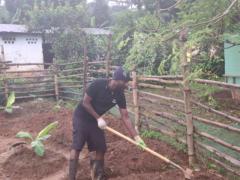
Write something
Racoon Party
Well, the racoons climbed the fence and had a heck of a good party in our garden last night. I am hoping someone has some ideas on how I can stop this nonsense. I am setting a trap tonight to relocate the intruders elsewhere. What I really need is a way to keep them out. The set up is two 10' x 10' dog kennels hooked together, making the outside frame 20' x 20'. It's about 6 foot tall with a grid for the fencing. The top is wide open. I am open to any and all ideas!
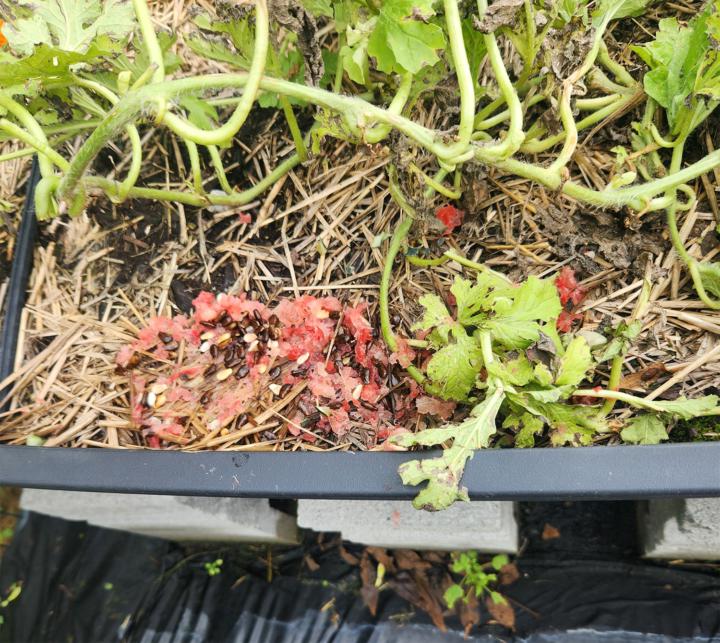
Four Legged Pests
Two days in a row now I have awakened to find one or more of my potted plants disturbed by some creature in the middle of the night. At first I thought a squirrel as I have over the years found them digging to bury nuts or look for what they thought they buried in a pot. Yesterday, I found one of my new fig trees had almost been dug out of it's pot. This doesn't appear to be a squirrel. I also have a lavender potted on a stair landing to the deck that two nights in a row has been dug out of it's pot and the dirt all over the place. So now I'm thinking a racoon. These masked varmints have been a pain in my side for years when it comes to my container gardens. Anyone have some solutions or ideas on how to deal with these night raiding bandits? Well after the 3rd night of raiðing my pots, I finally caught the culprit on the backyard security camera. Turns out my assumption was right, it's a racoon. So tonight the racoon trap goes out. Hopefully in the morning we will be ready to relocate this trouble maker to a new home.
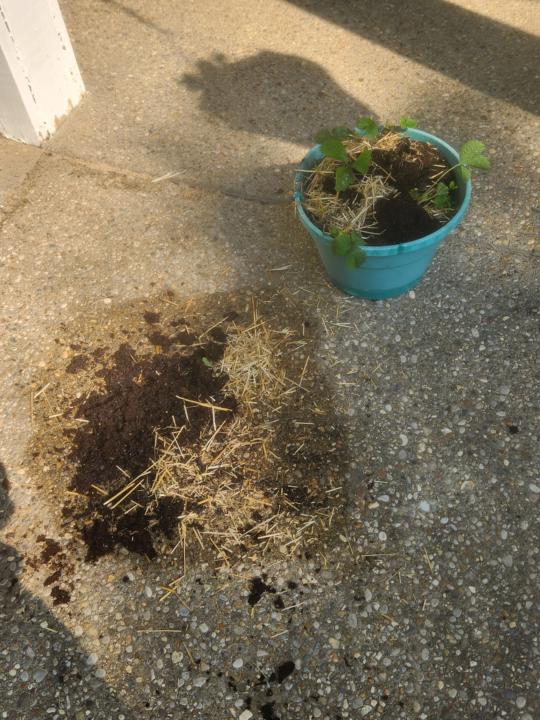
Question -Looking For Advice!
This was my 1st year gardening and I was figuring out how put the garden beds - to bed lol. Also new homeowner so was looking for best cost effective way to mulch the veggie garden beds. My mom asked her landscaper to not throw out the leaves this year so i could use them but when I opened the bag there's a lot of straw/hay? So it's not from her yard I ended up just using it anyway but now I'm nervous did this other persons yard have poison ivy? Pesticide treatments ? Or maybe it might be fake hay for fall decor? Could use some advice Should I just leave it alone or?
🕷️ Battling Spider Mites When You Bring Plants Inside for Winter
Bringing your plants indoors for winter keeps them safe from frost. But it can also invite in a few uninvited guests. One of the most common (and sneakiest) indoor pests is the spider mite. These tiny sap-suckers thrive in dry, warm homes and can quickly turn lush leaves into speckled, webbed messes if left unchecked. Luckily, with a little care and prevention, you can keep your indoor garden healthy and mite-free all season long. 🌿 𝐒𝐭𝐞𝐩 𝟏: 𝐒𝐩𝐨𝐭 𝐭𝐡𝐞 𝐒𝐢𝐠𝐧𝐬 𝐄𝐚𝐫𝐥𝐲 Spider mites are so small they’re almost invisible, but the damage they cause gives them away. Watch for: * 𝐓𝐢𝐧𝐲 𝐰𝐡𝐢𝐭𝐞 𝐨𝐫 𝐲𝐞𝐥𝐥𝐨𝐰 𝐬𝐩𝐞𝐜𝐤𝐥𝐞s on leaves * 𝐅𝐢𝐧𝐞 𝐰𝐞𝐛𝐛𝐢𝐧𝐠 between stems or under leaves * 𝐃𝐫𝐲, 𝐜𝐮𝐫𝐥𝐢𝐧𝐠 𝐟𝐨𝐥𝐢𝐚𝐠𝐞 that looks “dusty” * 𝐀 𝐬𝐭𝐢𝐜𝐤𝐲 𝐟𝐞𝐞𝐥 when you touch affected leaves If you suspect mites, hold a sheet of white paper under a leaf and gently tap it — if tiny dots fall and start crawling, you’ve found your culprits. 🪴 𝐒𝐭𝐞𝐩 𝟐: 𝐈𝐬𝐨𝐥𝐚𝐭𝐞 & 𝐈𝐧𝐬𝐩𝐞𝐜𝐭 Before bringing any plants indoors, 𝐢𝐧𝐬𝐩𝐞𝐜𝐭 𝐭𝐡𝐞𝐦 𝐜𝐚𝐫𝐞𝐟𝐮𝐥𝐥𝐲 under good light: * Check leaf undersides, stems, and near the soil surface. * If you spot signs of mites, 𝐢𝐬𝐨𝐥𝐚𝐭𝐞 𝐭𝐡𝐞 𝐩𝐥𝐚𝐧𝐭 𝐢𝐦𝐦𝐞𝐝𝐢𝐚𝐭𝐞𝐥𝐲 to avoid spreading the problem. * Give it a gentle rinse with a hose or shower to wash off dust and insects. 💡 𝑃𝑟𝑜 𝑇𝑖𝑝: A few days in a shaded, sheltered area (like a porch or garage) before moving inside gives you time to monitor for hidden pests. 💧 𝐒𝐭𝐞𝐩 𝟑: 𝐊𝐞𝐞𝐩 𝐭𝐡𝐞 𝐀𝐢𝐫 𝐇𝐮𝐦𝐢𝐝 Spider mites thrive in dry, warm air — exactly what most homes become in winter. Combat this by: * 𝐆𝐫𝐨𝐮𝐩𝐢𝐧𝐠 𝐩𝐥𝐚𝐧𝐭𝐬 𝐭𝐨𝐠𝐞𝐭𝐡𝐞𝐫 to raise local humidity. * 𝐔𝐬𝐢𝐧𝐠 𝐚 𝐡𝐮𝐦𝐢𝐝𝐢𝐟𝐢𝐞𝐫 nearby if your air is very dry. * 𝐌𝐢𝐬𝐭𝐢𝐧𝐠 𝐩𝐥𝐚𝐧𝐭𝐬 𝐥𝐢𝐠𝐡𝐭𝐥𝐲 every few days (except for varieties that dislike wet leaves, like succulents). 🧴 𝐒𝐭𝐞𝐩 𝟒: 𝐓𝐫𝐞𝐚𝐭 𝐈𝐧𝐟𝐞𝐬𝐭𝐚𝐭𝐢𝐨𝐧𝐬 𝐍𝐚𝐭𝐮𝐫𝐚𝐥𝐥𝐲 If you notice mites despite your best efforts, act fast: * 𝐑𝐢𝐧𝐬𝐞 𝐥𝐞𝐚𝐯𝐞𝐬 thoroughly under lukewarm water to knock off adults and eggs. * 𝐖𝐢𝐩𝐞 𝐰𝐢𝐭𝐡 𝐚 𝐠𝐞𝐧𝐭𝐥𝐞 𝐬𝐨𝐥𝐮𝐭𝐢𝐨𝐧 of mild soap and water (1 tsp per quart). * 𝐔𝐬𝐞 𝐧𝐞𝐞𝐦 𝐨𝐢𝐥 𝐬𝐩𝐫𝐚𝐲 or insecticidal soap once a week for several weeks to interrupt their life cycle.
2
0

Meyers Lemon Tree Woes
I have a Meyers Lemon tree that I purchased about 11/2 years ago. I keep it on the house during the winter and put on the deck late Spring to lare Fall. I brought it into the house several weeks ago when we started seeing frost. It is not happy at this time and has been dropping leaves like crazy. All the while blooming like it never has before. I've attached some pics of leaves that fell this morning. I also took it out on the deck and gave it a good spray with diluted Neem oil. I thought I saw evidence of spider mites yesterday and thought this maybe why it's dropping leaves like crazy. Last winter it did great inside. It doubled in size, so I reported it when I moved it outside. It even gad a couple of blooms and some tiny lemons that didn't last. But it tried. Anyone else here growing Meyers Lemon trees? Or have in the past? If so, have you had an issue like this with yours? If so, did you figure out what was happening? Did you find a solution? Any advice is appreciated. This is my first time growing one and I am still learning about it. Thanks for your thoughts and ideas!
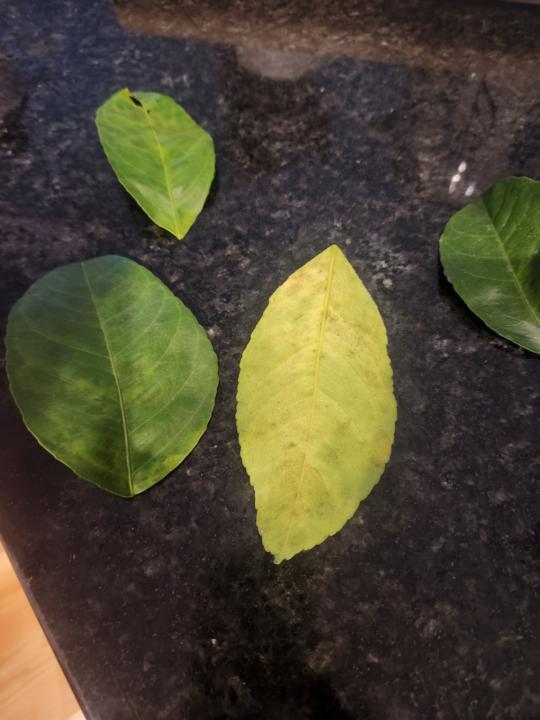
1-30 of 46
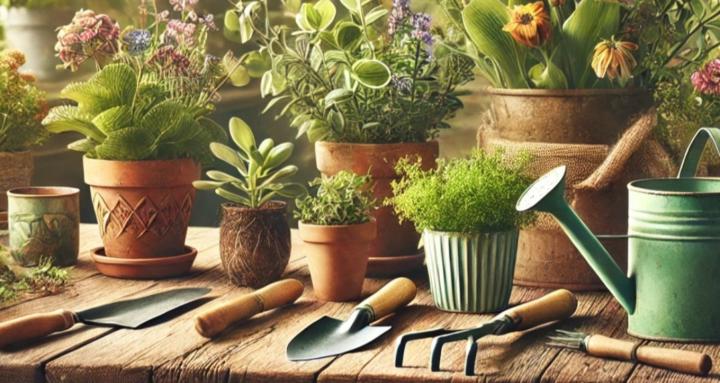
skool.com/gardening
🌱 Unlock your green thumb in the most supportive container gardening group online — exclusive tips, plant hacks, and growing wins await!
Powered by




